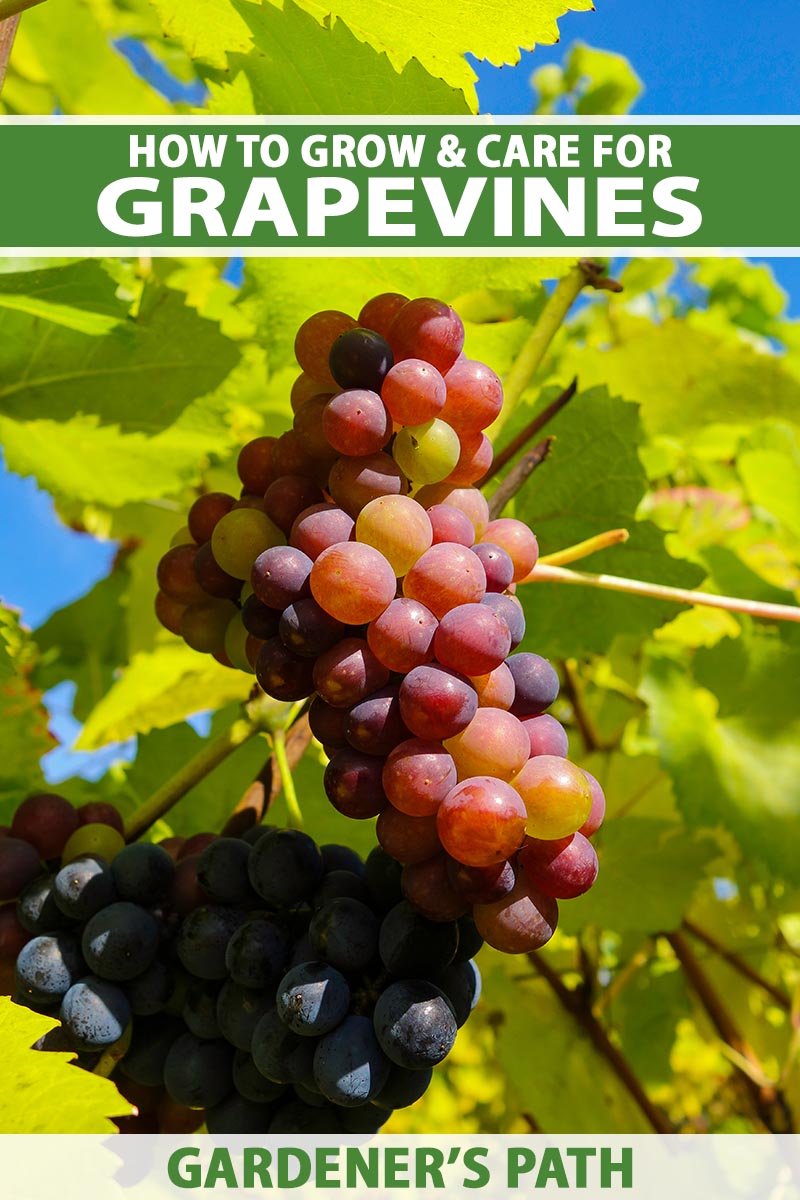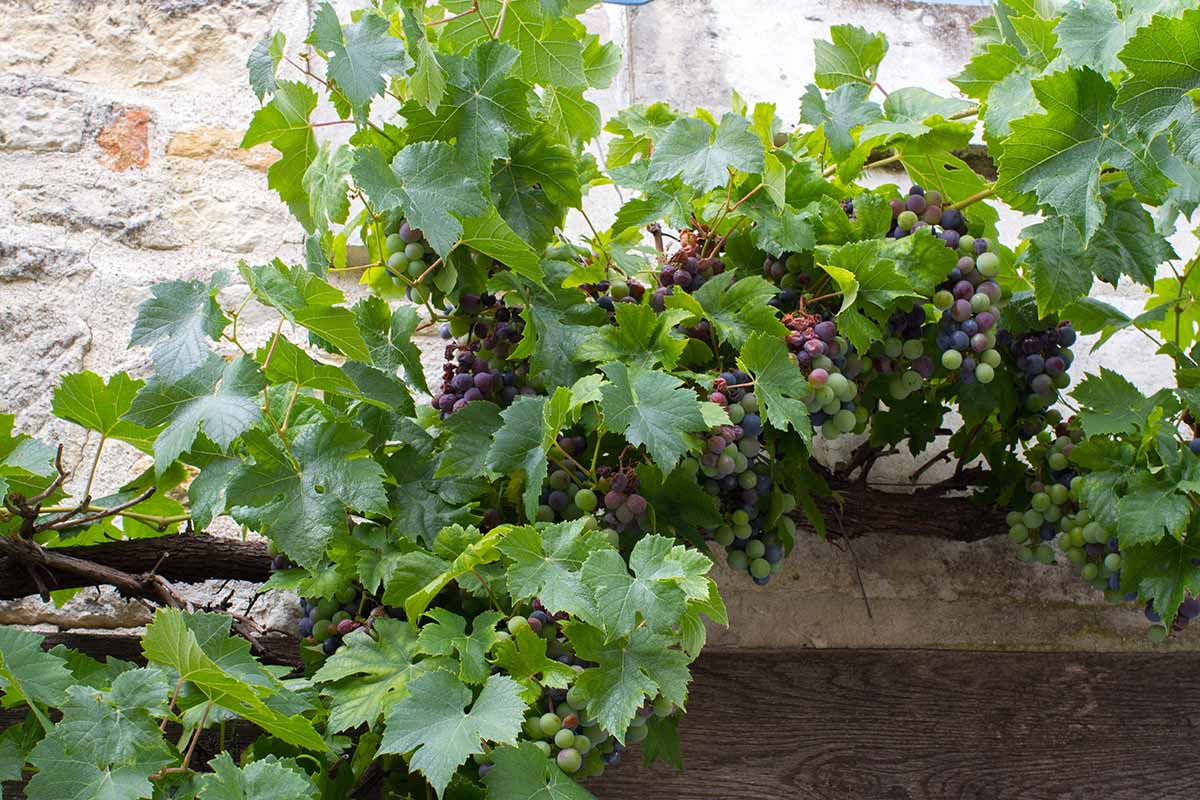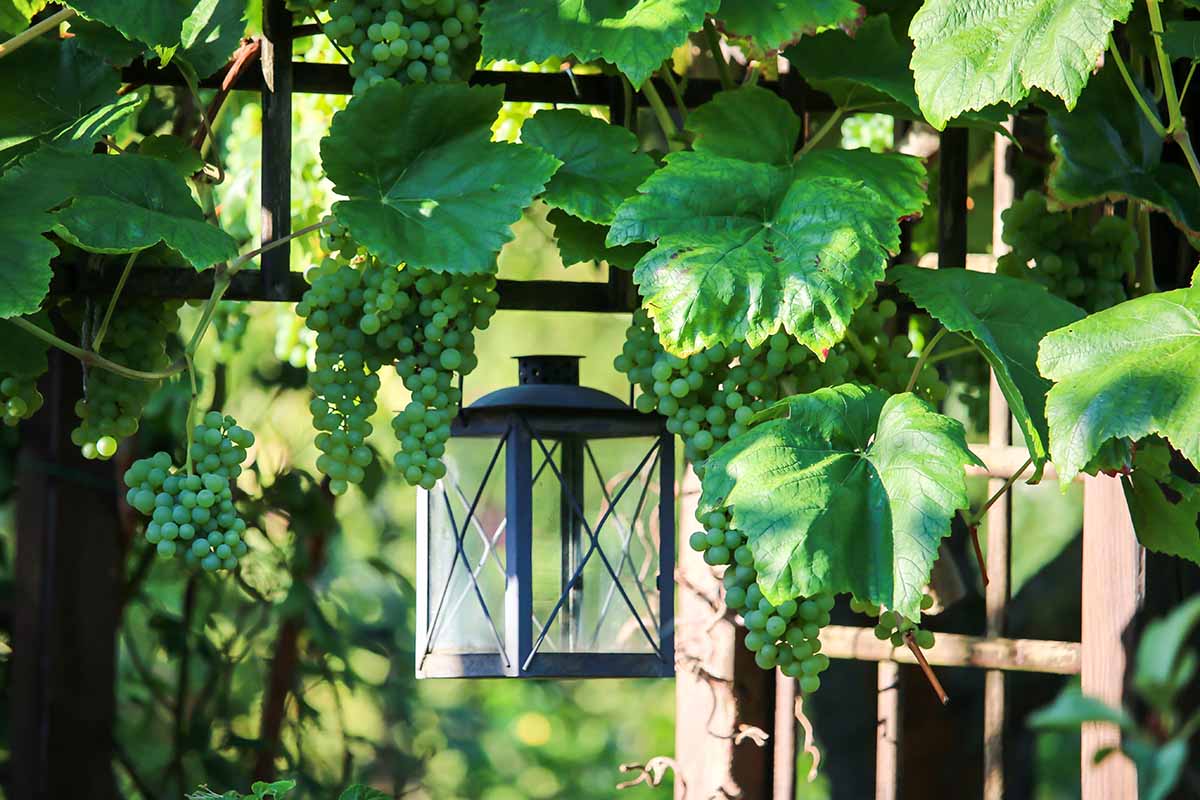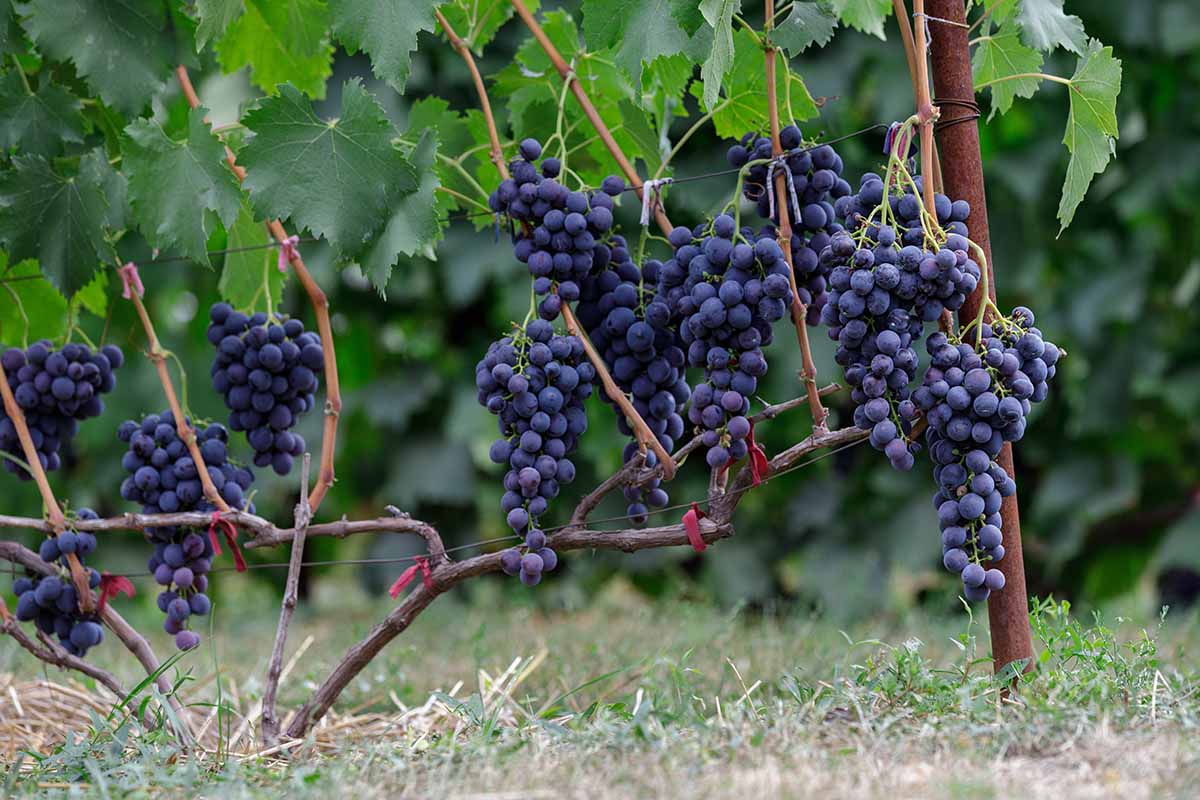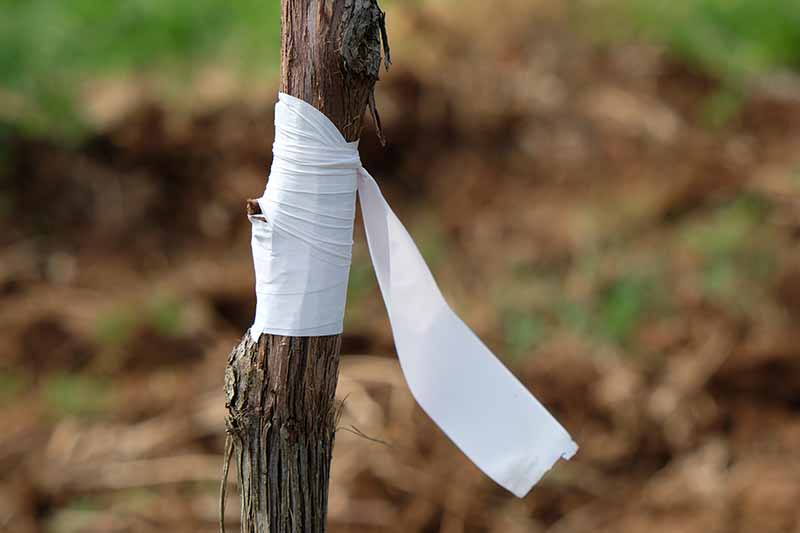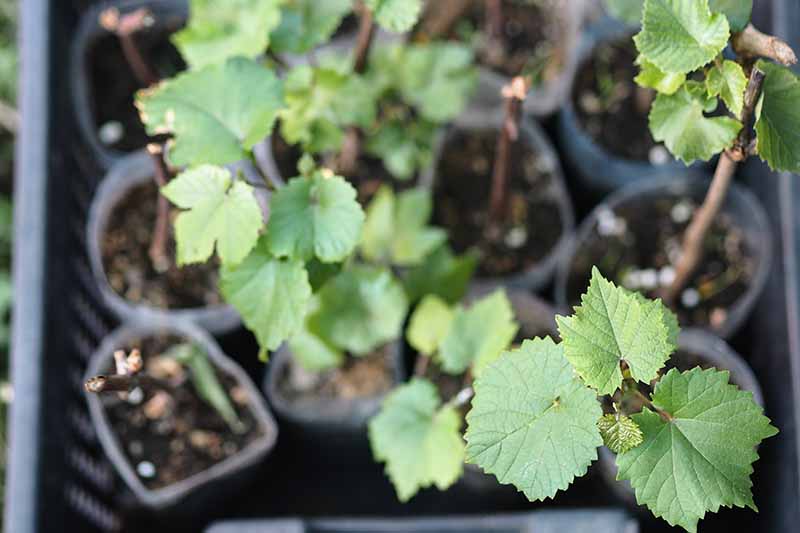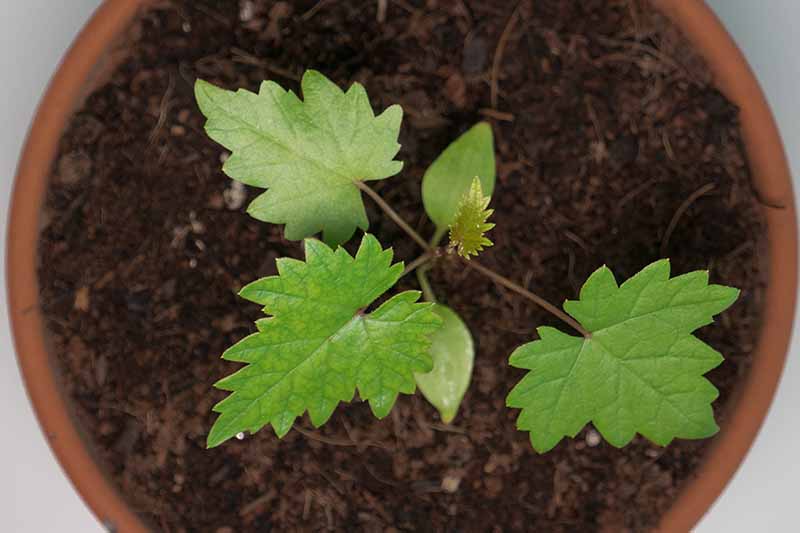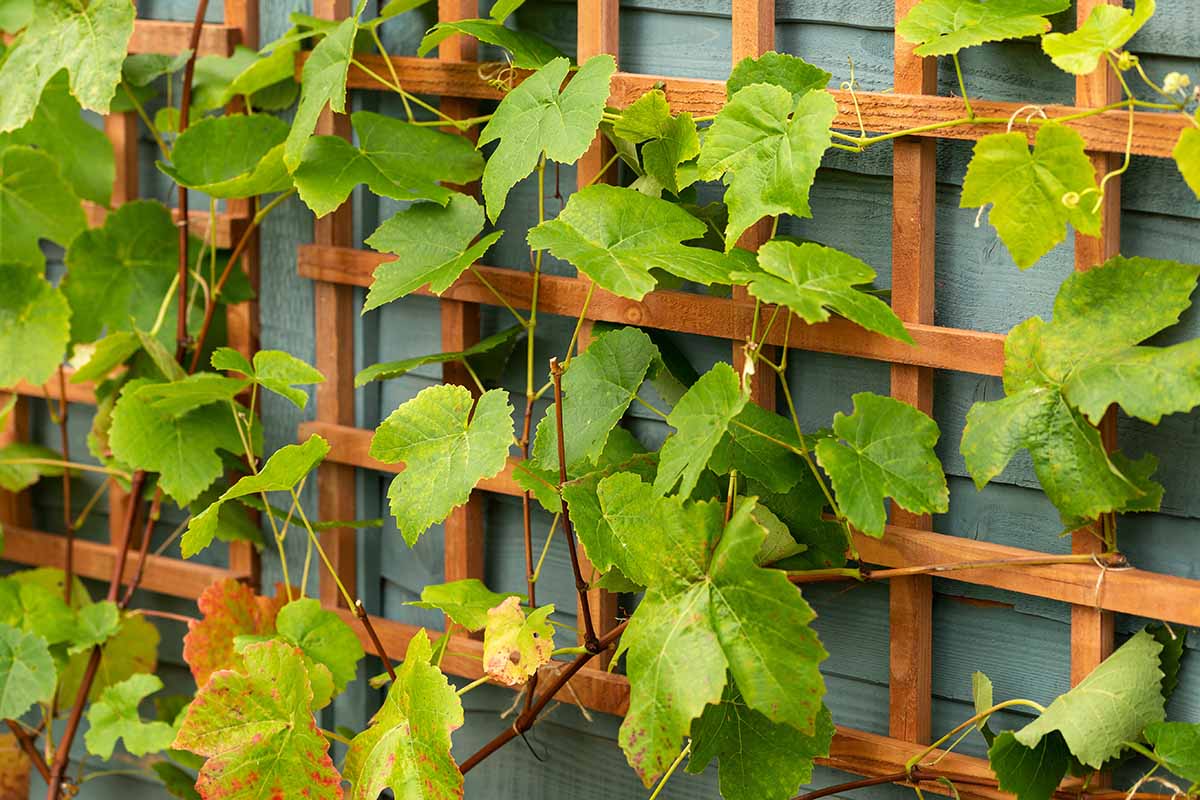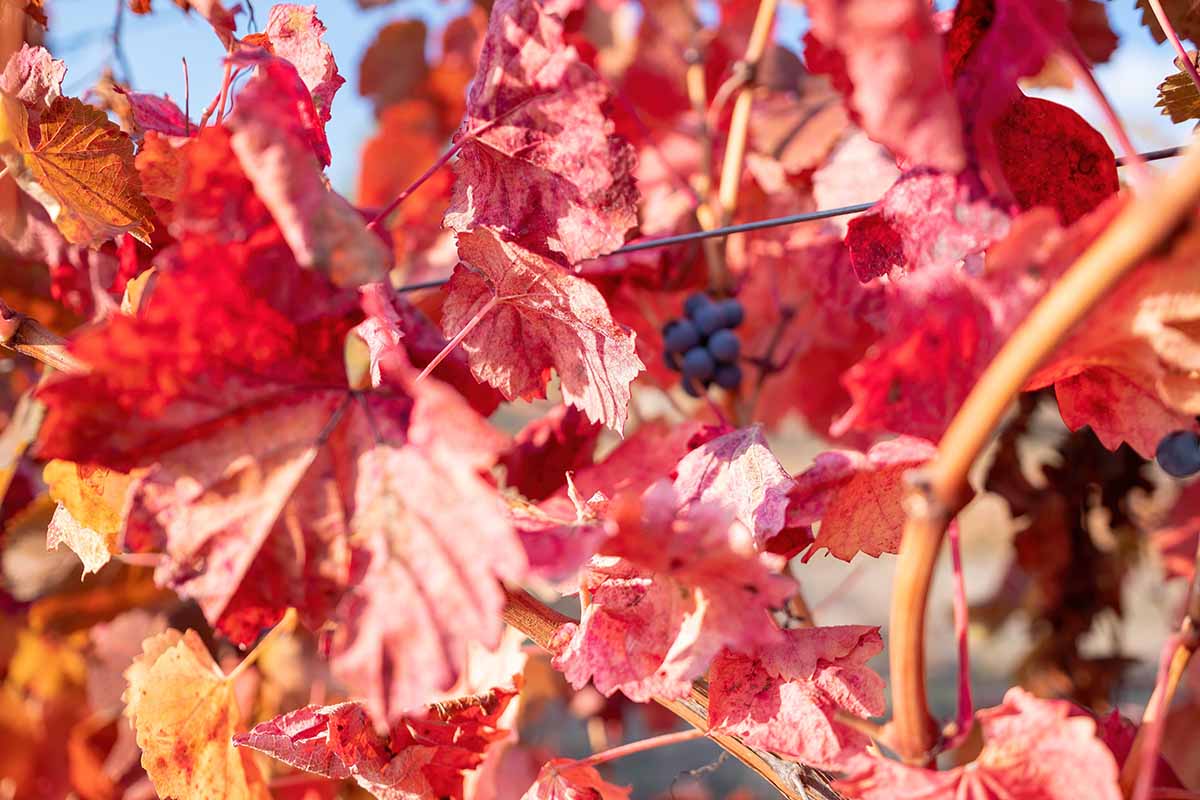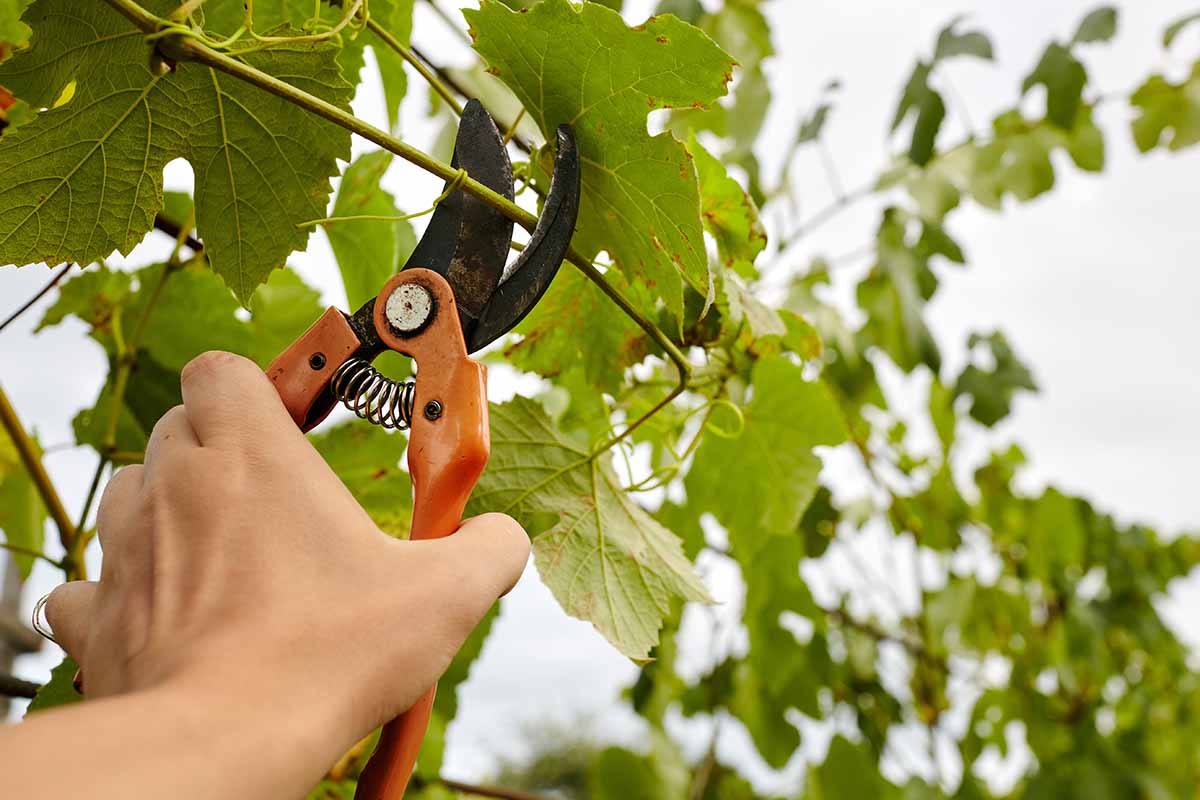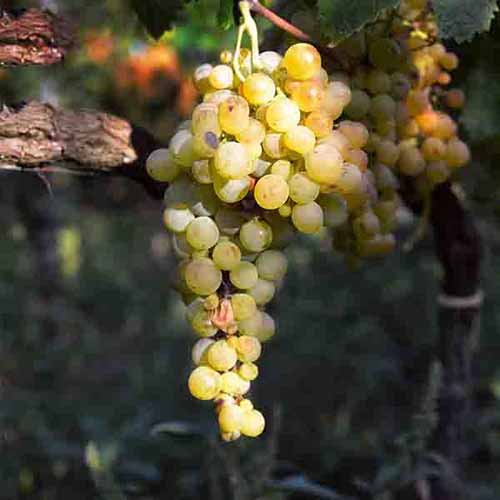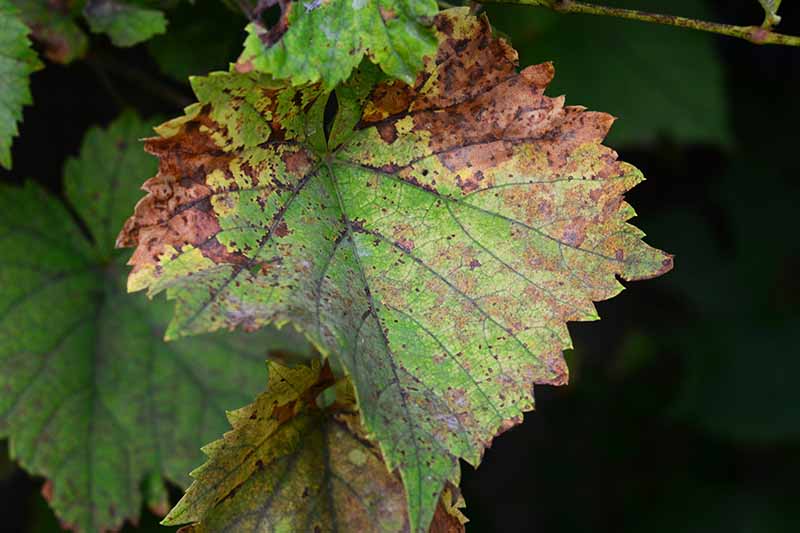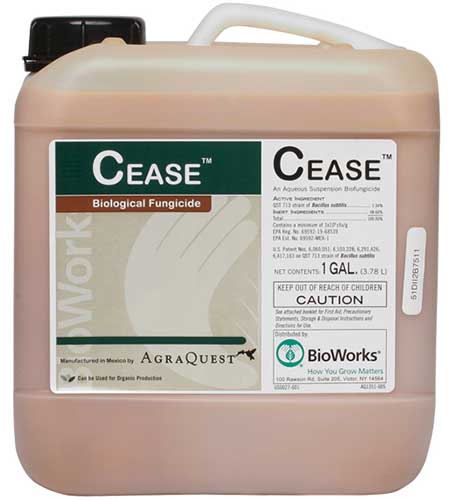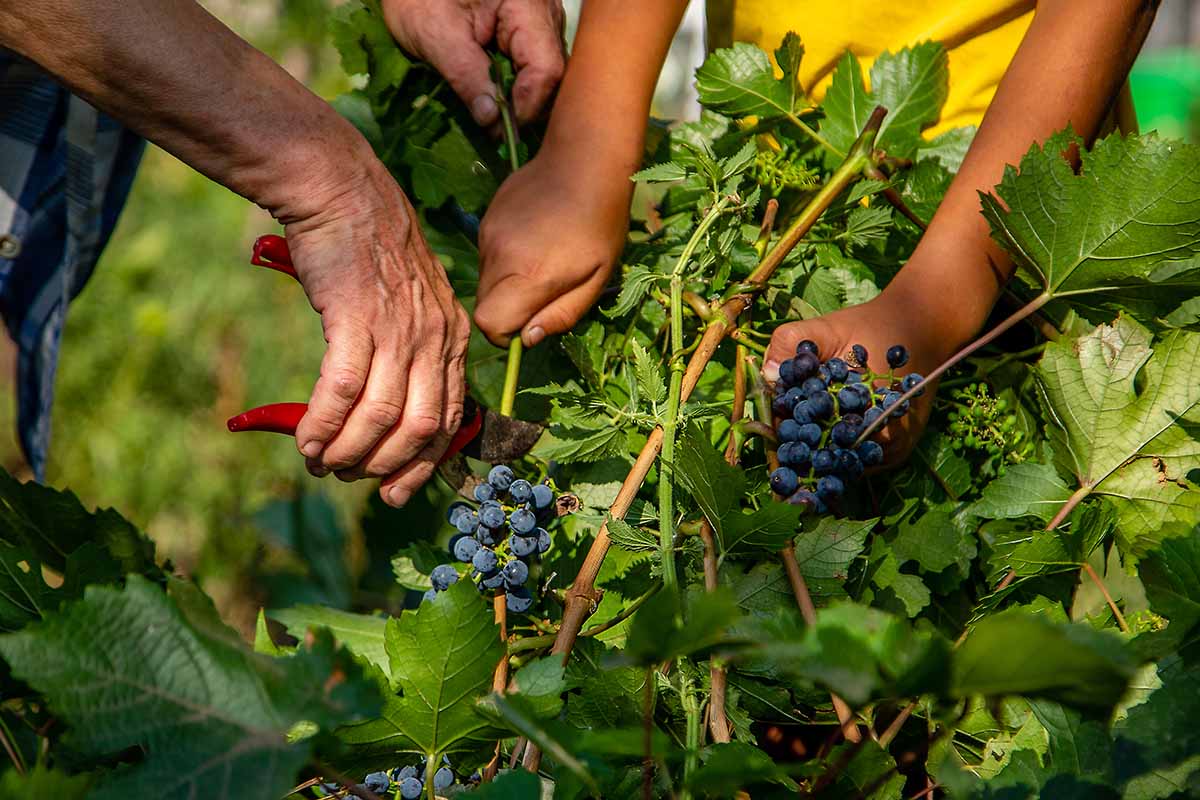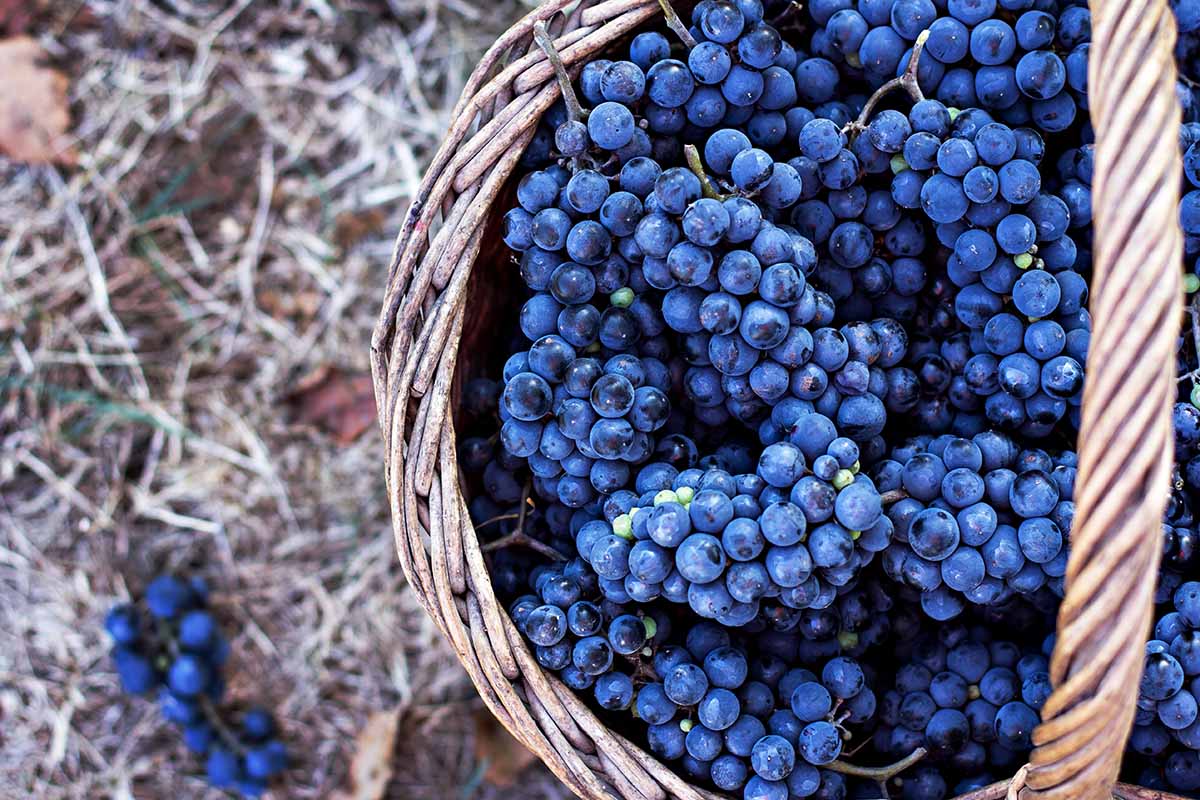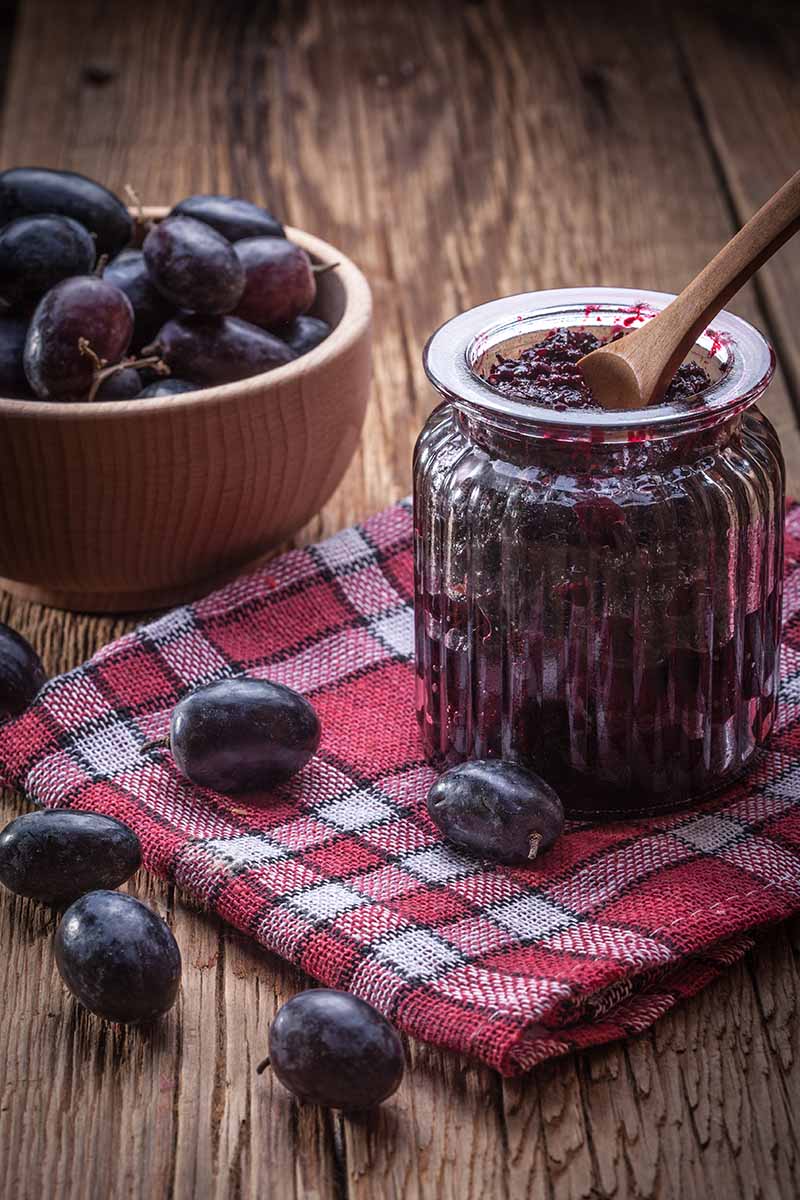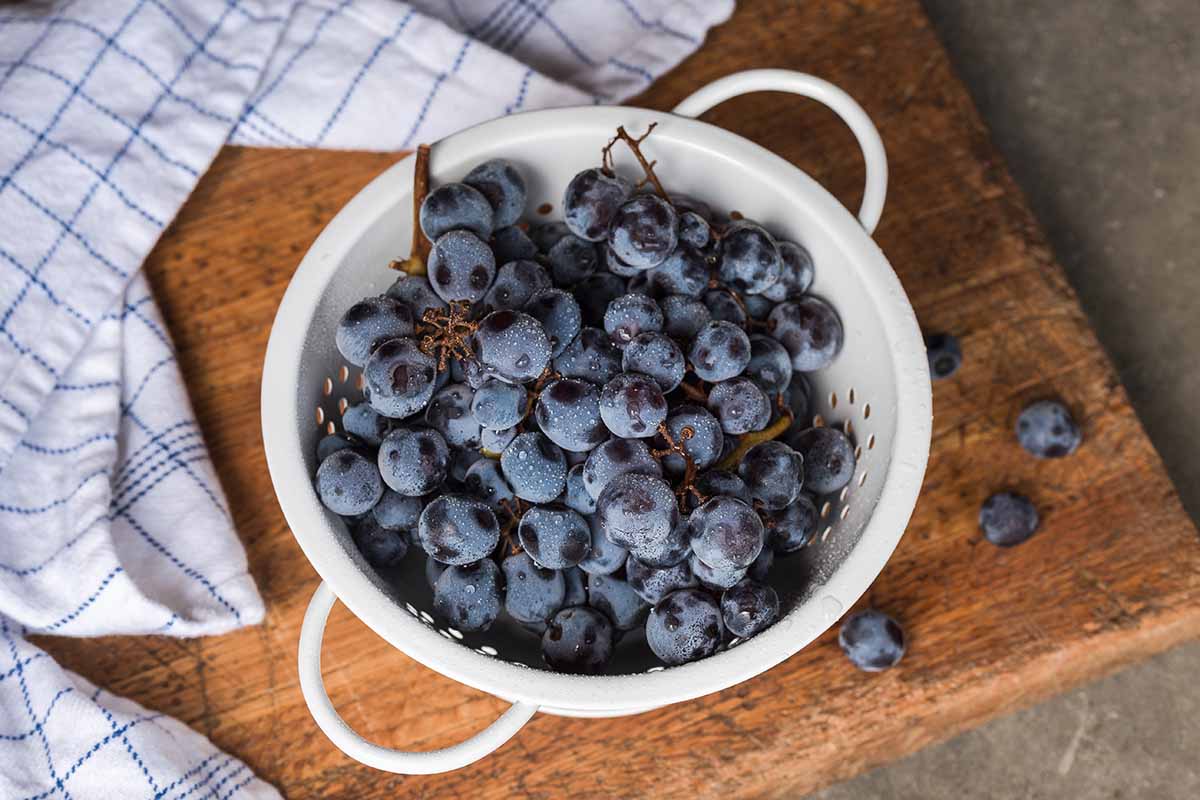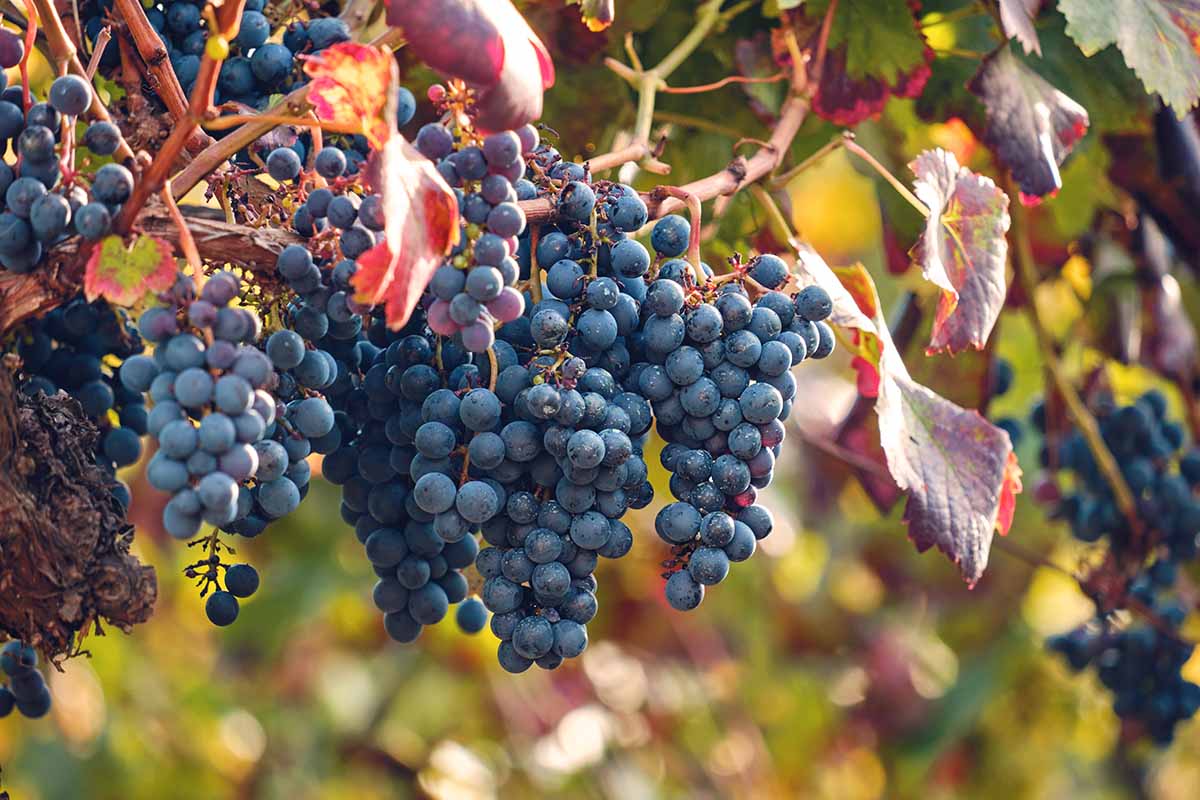Vitis plants give gardens a mythic appearance. Their existence is mentioned and honored in many ancient texts. It’s common for them to be depicted in paintings to symbolize abundance and harvest. We link to vendors to help you find relevant products. If you buy from one of our links, we may earn a commission. Once these woody deciduous perennials mature, you will be met with fruit that’s ready to harvest in late summer to fall. There’s nothing like enjoying fresh grapes from the vine or drinking a glass of wine made from the fruit you grew! And I can’t forget one of my favorite snacks, sun-dried raisins. Ready to learn how to grow grapevines in your garden? Here’s what we’ll cover:
Cultivation and History
Vitis is a group of perennial fruit-bearing vines in the Vitaceae family that grow best in Zones 3 to 10. There are currently 78 accepted species in the genus that are predominantly cultivated in temperate and subtropical climates in both the Northern and Southern Hemispheres. The history of Vitis cultivation is significantly intertwined with the heritage of many cultures that have grown and passed down heirloom varieties for generations. A handful of common species are ideal to grow in gardens, and there are many varieties to select from. Some gardeners prefer to grow species native to their area because of the grapevine’s benefits to local ecosystems. The three species that are the best pick of the bunch for growing at home are Vitis labrusca, V. vinifera, and V. rotundifolia. V. labrusca is native to North America and is commonly known as the fox grape. A popular cultivar derived from this species is the ‘Concord’ grape, the go-to variety for juice and jelly that’s also enjoyed as a fresh table grape. This species is the most cold-hardy. V. vinifera is the species that sparked viticulture, the practice of cultivating grapes for making wine! Its native growing range spans Europe, northern Africa, and western Asia. These fruits are better for winemaking than eating fresh. In addition, this species prefers warm and dry climates. V. rotundifolia, commonly known as muscadine, is native to the southeastern and south-central United States. This was the first species cultivated in North America. Their size, sweetness, and tender pulp make these grapes the ideal choice for making preserves like jams and jellies. Hybrids are also commonly available for home gardeners. Hybridization has helped to alleviate problems that once greatly troubled grapevine cultivation. French-American hybrids are a good example. They were grown in France during the 1860s to combat a phylloxera virus outbreak that destroyed 90 percent of French vineyards. These hybrids were created by crossing V. vinifera with V. rupestris, V. lincecumii, or V. riparia, resulting in cold-hardy and thicker-skinned fruit that can withstand pests and disease better than other varieties. Since then, hybrids have come a long way! There are many notable varieties to select from that offer stronger resistance to disease. We’ll recommend a few options in the cultivars to select section below.
Propagation
There are a few ways you can propagate grapevines. The most common method is by taking cuttings, a regenerative approach that has been practiced for generations, or you can start from seed. The easiest way to get started growing your own grapevines is by purchasing a one-year-old plant from a nursery. You can also participate in local plant swaps to trade cuttings and learn more about the cultivars people are growing. The California Rare Fruit Growers is also an excellent resource for accessing grapevines that are not commonly offered by nurseries. They are the largest amateur fruit-growing organization in the world! You may also come across grafted plants, or wish to someday experiment with creating your own. There are several common ways to graft vines onto hardy rootstock, including cleft, bark, and whip grafting. Grafting is a propagation approach that joins a scion, or new canes, of one cultivar or species with the rootstock of another. Over the years, grafting techniques have advanced to not only create disease-resistant plants but to also grow more than one variety on a single rootstock in small spaces or to reduce the overall size of the plants. Detailed instructions for grafting are beyond the scope of this guide.
From Cuttings
The most common method of propagating grapevines is by cloning plants via dormant cuttings. Wait until they go dormant in the winter and cut the stem right above the first or second node where it branches from the central trunk. Take several cuttings in case some of them do not root. Cut the stems into sections one foot in length. Each cutting should have seven buds at most, and no less than three. Knowing the top from the bottom is essential to avoid planting your cuttings upside down. Look at the growth direction of the nodes – they should point upwards. Holding the cutting in the middle with the nodes facing up, peel off one inch of bark at the bottom of each stem to expose the green cambium layer below. Be sure to choose containers that are not too shallow, preferably at least eight inches deep, with drainage holes in the bottom. Cuttings need plenty of space to produce healthy roots. Fill your containers with sterile, well-draining potting medium. To promote root growth, dip your cuttings into powdered rooting hormone. Stick individual cuttings into their containers, making sure the exposed cambium is covered, along with one node above that. Pat the soil down around each cutting and water them in. Ensure that the potting mix is kept consistently moist, but not soggy. Put your containers in a location that receives bright, indirect light to keep the cuttings from drying out. In four to six months, once they have started developing new stems and leafing out, they can be transplanted into your growing space.
From Seed
You can grow grapes from seeds! It’s a fun and easy process; it just takes a little longer for them to get established. It’s important to remember that if you start from seed, you will likely not grow a plant that’s identical to the parent vine. And in the case of some hybrids, the seeds may not be viable. It really is a gamble and one that some gardeners would rather not take. However, this is an approach that some gardeners intentionally take to breed new varieties. Cut the grapes at the top, where they are connected to the stem, and remove the seeds. Allow the seeds to completely dry before sowing them. Fill shallow three- to four-inch nursery containers or seed trays with individual cells with seed-starting mix. Place the seeds about one inch apart or individually in seed-starting cells, and cover lightly. Water them and place them in a sunny location if the weather is favorable or indoors under grow lights. Make sure you maintain even moisture in the growing medium. Seeds can take up to three months to germinate.
From Seedlings/Transplanting
If you have a potted vine, perhaps started from a cutting, the optimal time to plant it out in your garden is late spring or early summer. Bare root vines are typically planted in early spring, after the last frost. If you are planting bare root vines, soak the roots in water for a few hours before setting them out. Dig a slightly bigger hole than the root structure, place your vine in the hole, and backfill with soil, lightly patting it down all around the plant. Water deeply. If you’re planting more than one vine, space your plants six to eight feet apart. If you are transplanting a grafted specimen, the graft point should be positioned above the soil level, so the scion does not root.
How to Grow
Grapes are primarily self-fruitful, so cross-pollination is usually not needed. But there are some exceptions with cultivars that are not self-pollinating and need a partner to produce fruit. Grapevines prefer fertile, slightly acidic soil with a pH of 5.6 to 6.9 and a location that receives full sun. Ensuring that the soil drains well will encourage healthy root development. Before planting, you can conduct a soil test to check if there are any nutrient deficiencies in your soil and amend accordingly. Once your grapevines are planted, it’s important to keep up with pruning them to establish a strong trunk. Along with seasonal pruning, they will require proper support like a trellis – or they can grow on an arbor over a patio. Keeping up with weeding around your grapevines is vital to avoid competition. Make sure to remove all weeds around the plant’s base. Fertilizer requirements will vary according to the variety you are growing, making it hard to provide general guidance. We cover the ins and outs of fertilizing grapevines in more detail in a separate guide. (coming soon!) Some critical items to consider when applying fertilizer are to apply it only in early spring, and to remember that too much nitrogen can cause the plants to become more vegetative, producing no flowers. You will find that they will flourish with little water after their first year. Just ensure your grapevines receive an inch of water each week in their first year to help them become established, especially when they are first planted. You can use a rain gauge to determine how much precipitation they are receiving naturally. These plants are versatile and can be grown in large containers. Choose a 15- to 20-gallon container with a depth of 16 to 18 inches that is sturdy and strong enough to support a robust vine. Be mindful when selecting cultivars for growing in containers and look for varieties that are more compact.
Growing Tips
Provide weekly deep waterings to first-year vines to grow a healthy root system.Planting in a location with full sun is key to fruit production.Seasonal pruning is essential to establish a solid trunk.
Pruning and Maintenance
Knowing grapevine pruning protocols is essential to cultivating these plants to their fullest potential. In the case of new plants, prune them when you set them out in spring. Cut back all the shoots and leave one central leader; trim this shoot back to three nodes. As this shoot grows, you will want to train it since it will become the grapevine’s trunk. If your first-year plant did not establish a taller and stronger shoot, repeat the pruning approach you took in spring when you first planted the vine while plants are dormant in winter. This will help the plant to establish a more substantial trunk. Cane pruning established grapevines will be required to maintain your vine’s growing pattern and for a healthy harvest, since fruit grows from first-year canes. Learn more about how to prune grapevines in our guide (coming soon!).
Insects
Most of the insects that may affect your grapevines are relatively common in gardens and can easily be controlled. If you’re unsure, you can look up your local county master gardener’s website to find resources that can support you in selecting the best varieties for your area. Here are a few recommended cultivars that will suit various gardens and taste buds.
Concord
Of course, I would be remiss if I failed to mention the popular ‘Concord’ grape. These are delicious! This V. labrusca cultivar will produce large bunches of blue-black, seeded grapes that have a superb and distinctive flavor. ‘Concord’ The vines can grow up to six feet tall and spread up to 10 feet wide. You can purchase this variety from Nature Hills Nursery as a bare root vine.
Osceola
V. x ‘Osceola’ is a white hybrid cultivar that produces delicious pale yellow fruits with golden flesh. A popular white wine grape, ‘Osceola’ has a sweet flavor ideal for eating fresh, pressing for juice, or making preserves. ‘Osceola’ Disease resistant and self-pollinating, ‘Osceola’ grows to a mature height of 15 to 20 feet with a spread of six to 10 feet. You can pick up bare root plants at Nature Hills Nursery.
Triumph Muscadine
V. rotundifolia ‘Triumph Muscadine’ will give you large harvests that ripen in August and continue through September. This self-pollinating and disease-resistant muscadine type looks beautiful growing around a trellis or on a patio arbor. ‘Triumph Muscadine’ ‘Triumph Muscadine’ can reach 12 feet in height and spread eight feet wide. The fruit is preferred for winemaking but is also enjoyed in preserves or for snacking on fresh. Fast Growing Trees has this cultivar available in one-gallon pots that will provide you with fruit within the first season! The many options available might make it challenging to know what you will be happy with personally. Check out our roundup that highlights more of the best cultivars. (coming soon!)
Managing Pests and Disease
Grapevine resilience has increased over time, and disease-resistant cultivars offer a wide selection to home growers. There are a few insects and diseases to be aware of so you can manage them before they become an issue. However, one of them that we should pay special attention to is the glassy-winged sharpshooter, which spreads the devastating Pierce’s disease.
Aphids
Aphids, tiny insects from the superfamily Aphidoidea, enjoy sucking nutrient-rich sap from plants by piercing them, potentially spreading disease when they do so. They may be lime green, red, black, or peach-colored. And they leave behind a sticky film known as honeydew that ants enjoy. Attracting ladybugs, green lacewings, and birds will help keep aphid populations in check. Learn more about how to control and eradicate aphids in our guide.
Glassy-Winged Sharpshooters
This leafhopper, Homalodisca vitripennis, is responsible for spreading the deadly bacteria Xylella fastidiosa, which causes Pierce’s disease. Larger in size than other leafhoppers, adult glassy-winged sharpshooters (GWSS) are about half an inch long. They have transparent wings and are usually black to dark brown. Their abdomens are off-white to yellow. These pests prefer to feed on the tips of new shoots, and can leave a whitish powdery coating on leaves or fruit that can rain down like mist if growing overhead. Your local agricultural commissioner’s office should be contacted if you observe this pest in your area as Pierce’s disease is a deadly threat to the commercial grape industry.
Japanese Beetles
Popillia japonica, commonly known as the Japanese beetle, can become a nuisance when populations grow out of control. The adult beetles feed on foliage and are particularly partial to new growth, resulting in skeletonized leaves. Rarely, they feed on developing fruits as well. In the case of a small infestation, you can handpick the adults and drown them in a bucket of soapy water. For larger numbers, you can spray your plants with neem or horticultural oil. Many gardeners are familiar with the adult beetles but are unaware of what the larvae or grubs look like. They are whitish with six legs and burnt orange-colored heads. Their bodies have a shiny appearance and will curl up into a C-shape if disturbed. When the larvae mature, they are about an inch long. Eradicating the larvae from the soil by digging them up will help control beetle populations as they overwinter in the soil. You can place them in a bucket for birds to visit and enjoy as a snack. If you have chickens, they will appreciate this treat. Learn more about how to manage Japanese beetles in our guide.
Disease
Vineyards that practice large-scale monoculture are more susceptible to disease than biodiverse gardens. With gardens and even vineyards, we have the opportunity to grow other plants like clover, geranium, hyssop, lavender, and rosemary to support the production of fruit while restoring balance to the ecosystem. Through cultivation, many disease-resistant varieties have also become available, making growing grapes more appealing!
Anthracnose
Anthracnose in grapevines is caused by the fungus Elsinoë ampelin. It is commonly referred to as bird’s eye rot and is a severe disease that is most prevalent during warm and wet weather. Avoid overhead watering and use mulch to help prevent water from splashing onto leaves. Providing plants with proper spacing and trellising vines will encourage adequate air circulation. Keeping in mind that this fungus is spread by water, it’s essential not to splash water on leaves when watering. It’s always best to water at the soil level, to avoid splashing and contact with plant foliage. Remove and dispose of all infected parts of the plant. You could also spray your plants with a biofungicide like Bacillus subtilis to treat infections or for prevention. This biofungicide serves as an effective option to help control the spread of invading pathogens, and it is safe for pollinators. CEASE Biofungicide Sold as CEASE, it’s available at Arbico Organics.
Black Rot
Black rot disease is caused by Guignardia bidwellii fungi, and the risk of spread is heightened when temperatures are above 65°F and there’s rain. This tends to happen in midsummer. Leaves and shoots will have brown spots that eventually dry out and die. The infection then spreads to the fruit and prevents them from maturing. Maintaining good air circulation by following plant spacing guidelines also helps prevent infection. As soon as you see signs of an infection, cut off and dispose of any affected foliage – place it in the trash, not on your compost pile!
Pierce’s Disease
Caused by Xylella fastidiosa bacteria, this disease is spread by the glassy-winged sharpshooter. This insect has left devastating damage in its wake by spreading this fatal disease. You can learn more about how to prevent Pierce’s disease on grapevines in our guide.
Powdery Mildew
Powdery mildew is common in home gardens and in the case of grapes, it’s caused by the fungus Uncinula necator, that spreads on the tops and undersides of leaves in humid environments. This can sometimes cause the leaves to curl. Learn about treating powdery mildew using homemade and organic remedies in this how-to guide.
Harvesting
Grapes will not ripen off the vine, so before you harvest, check the number of days to maturity for the cultivar you selected, and plan accordingly. Harvest time typically occurs in late summer or early fall and it can take up to three years after planting until you get a substantial crop. Harvests can be extended by growing various varieties that ripen at different times. Taste a few before you harvest a bunch. If they are juicy and ready, clip them from the vine and place them in a crate. You can find some excellent grape storage tips from our sister site, Foodal. You can also gather grape leaves when they are tender and young in late spring or early summer for use in various recipes and for pickling.
Preserving
There are several ways to preserve grapes! You could juice them and freeze the juice for later use. Making jellies or jams is a popular and tasty way to extend your harvest. Learn more about preservation techniques that will extend the shelf life of your preserves on our sister site, Foodal. Aside from eating grapes as a snack, you could dehydrate a bunch to make raisins. And, if you grew them to make wine, well then, we have a guide for you! Check out this article from Foodal for an excellent introduction to this ancient art of alchemy. And, don’t forget about grape leaves for pickling! They are a great source of tannins which help prevent your pickles and other veggies from getting soft and soggy.
Recipes and Cooking Ideas
I love the way firm sliced grapes taste mixed into autumn salads with greens, grains, or sometimes both! And we all know that no charcuterie board is complete without a bunch of beautiful grapes. Aside from enjoying them fresh, you could also bake with them. This rustic grape galette is decadent and gorgeous. Just imagine serving a piece of this galette paired with the perfect wine! Making one at home is a great way to experience how tasty grapes can be when they meet with heat. Find the recipe on Foodal. And we don’t want to leave the abundant leaves out! They are an essential ingredient in one of my favorite traditional Lebanese recipes, warak enab, which is Arabic and translates to “grape leaves.” Also commonly known as dolmas, there are many variations of this recipe, but one of my favorites is simple and uses fresh leaves filled with a delicious mixture of ground meat, rice, lemon juice, and spices. These vines can last for years in your garden or they can be grown in containers. They indeed are versatile! Are you growing grapes right now? Do you have a cultivar that has been in your family for generations? Let us know in the comments section below! If you have any questions, that’s the place to leave them. We enjoy and learn from your gardening inquiries. Learn more about growing fruit in your garden by checking out these articles next:
How to Grow GooseberriesHow to Grow Cantaloupe in the GardenJuicy and Sweet Tips for Starting Your Own Berry Patch
